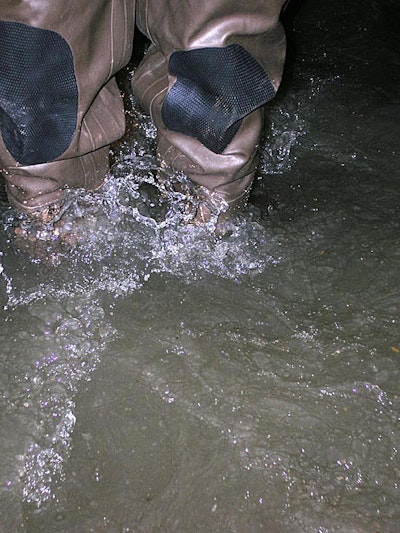
Interested in Rehab/Relining?
Get Rehab/Relining articles, news and videos right in your inbox! Sign up now.
Rehab/Relining + Get AlertsWith the curious mind of a journalist — and clothed head to toe in protective gear — Adam Levine slowly descends into the bowels of the Philadelphia sewer system.
It’s not a place many would dream of visiting, but Levine, a historical consultant to the Philadelphia Water Department (PWD) has made three trips — experiencing life down under as part of researching the city’s topographical history.
“Sure there were some heebie jeebies, but it was an adventure,” says 54-year-old Levine. “And I was so well taken care of,” he notes, speaking of the sewer inspector and crew who accompany him.
“My favorite part is that so few people have done this and so few people want to do it … part of it is just, ‘I’ve done this and you haven’t.’
“I just like to be underground, and to see how it works firsthand.”
Going down under
While some of his passion as a writer and researcher has led him beneath the manhole, more often, Levine is above ground, collecting, and lecturing on historical material. And it’s a true passion that he has turned into a career.
“I had been obsessed with the idea of creeks running in underground sewers for a long time, ever since I learned that Mill Creek had been piped underground and ran beneath 43rd Street in West Philadelphia, where I lived for almost 20 years,” says Levine, a seasoned freelance writer who has written many books and articles about gardening.
In the mid-1980s, when he was tending a community garden on a vacant lot in Philadelphia, Levine learned about the stream. “That intrigued me and appalled me that somebody could put a stream underground,” he says.
Quite a bit later, in 1997, Levine pitched a story idea on that topic to a local newspaper, and he arranged a sewer tour to write his first-person account (which he later hoped to turn into his yet-unpublished book, tentatively titled Creek to Sewer).
The PWD read his article and soon took him on board as a part-time consultant; he has worked with them since 1998, piecing together the history of the city’s many lost streams and its complex sewer system.
“I am obsessed by the subject of urban sewers, urban watersheds and the unfortunate intersection between the two. I am also passionate about sharing my work and my research with the world,” he says.
Based on some of the PWD’s green initiatives, “They knew a lot of their public education was going to be about watersheds,” says Levine. “As Philadelphia designs green infrastructure projects, it’s really helpful to know what’s underground, where the old stream valleys are. I was sort of peeling back the layers and showing people the history. The designers of these projects find it very helpful.”
Joanne Dahme, public affairs manager for the PWD, says, “The information Adam has collected helps us in the design process. We’re able to have a more informed process.”
Levine’s research has uncovered many old maps and photographs relating to urban development, including sewer construction, street embankments, old mills and old houses (many of which can be seen online at www.phillyh2o.org). Some items date to the late 19th century and can be seen in exhibits at the PWD’s educational center in the historic Fairmount Waterworks building.
“We use history as a teaching tool,” Dahme adds.
Levine has degrees in American civilization and environmental studies, but he says it took him almost two decades to figure out what to do with them. And he is a true lifelong learner. “The more I know, the more I can read into what I find,” says Levine.
With the city’s 3,000-mile sewer system as his playground, Levine has miles to go before he sleeps — and much more information to unearth. Not only is it satisfying a passion in him to know more, Levine feels that sharing the information is essential as well.
“When you’re trying to manage pollution and stormwater on a watershed basis, you need to enlist the aid of everybody in the city,” he says. “One way is to show them that there were streams here — many of the sewers follow the course of the old streams.”
And why does he feel that is important? “So many urban people are disconnected from living in a natural landscape.”
And that’s one thing Levine is willing to remedy — even if it means donning waders, boots and gloves and going “down under” yet again.






